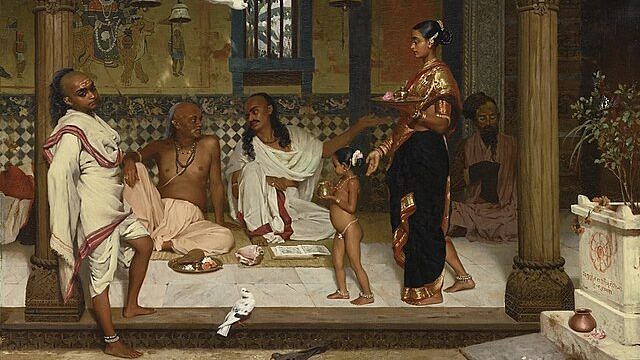Thank you dear subscribers, we are overwhelmed with your response.
Your Turn is a unique section from ThePrint featuring points of view from its subscribers. If you are a subscriber, have a point of view, please send it to us. If not, do subscribe here: https://theprint.in/subscribe/
Once upon a time, in the vast land of India, there lived a Brahmin named Gautam. He had witnessed the rise and fall of Brahmins in Indian society and carried within him the stories of their journey.
Gautam was born into a family deeply rooted in Brahmin traditions. From a young age, he was taught about the importance of spirituality, education, and leading a righteous life. As he grew older, Gautam realized that Brahmins held a privileged position in society.
In those days, Brahmins were regarded as the spiritual and intellectual leaders of the land. They were responsible for conducting religious rituals, imparting knowledge through education, and even contributing to the legal systems. Their wisdom and guidance were sought after by people from all walks of life.
Not only did Brahmins hold significant spiritual power, but they also enjoyed influence in governance. They occupied key administrative positions and wielded considerable authority over regional affairs. This influence granted them a sense of esteem and respect among their peers.
Moreover, Brahmins were often prosperous landowners and actively engaged in various economic activities. Their wealth and affluence allowed them to lead comfortable lives and contribute to the economic development of their communities.
However, not everything was smooth sailing for the Brahmins. Society, structured around a rigid caste system, held deep-rooted tensions. While some revered the Brahmins for their knowledge and worth, others harboured resentment towards their privileged status.
Critics accused Brahmins of economic exploitation, claiming that they took advantage of their roles as landlords. Additionally, their privileged position often led to perceptions of arrogance and elitism among other communities, further alienating them from the larger social fabric.
As the tides of history turned, British rule swept across the land. The year 1857 witnessed a mutiny, which some saw as a Brahmin-led rebellion against British oppression. In response, the British adopted policies specifically targeting the Brahmin community.
These policies, fuelled by a perception of Brahmin privilege, systematically excluded Brahmins from government positions. As a result, their economic status suffered, causing many Brahmins to face financial struggles.
To further exacerbate their plight, British historians and administrators depicted Brahmins in a negative light. The rewriting of history added to the social challenges faced by the community, deepening the divide created during colonial rule.
With the winds of modernization blowing across India, Brahmins saw a decline in their traditional roles. The rise of English education diminished the demand for Vedic education, leading to a downgrading of their social status.
These societal shifts had lasting consequences. Many Brahmins found themselves facing impoverishment. In several regions, a considerable proportion of Brahmins lived below the poverty line, struggling to make ends meet.
Misunderstandings and stereotypes continued to plague the Brahmin community, hindering their social and economic integration. In an attempt to socialize and be a part of the elite, some Brahmins even felt compelled to consume meat and alcohol, deviating from their long-held dietary and cultural practices.
Moreover, Brahmins who offered their services in temples were sometimes criticized or victimized for requesting money in return. Even though they constituted only a minority population, comprising just 5% of the overall Indian population, their struggles and grievances often went unnoticed by post-independence governments.
Through the eyes of Gautam, the story of Brahmins in Indian society came to life. He had witnessed the historical privilege they enjoyed and the subsequent marginalization they faced. He narrated the tales of how societal perceptions changed, external forces acted upon them, and their struggles persisted.
Despite the challenges they confronted, there were those among the Brahmin community who sought to navigate these social discourses in unique ways. One such individual was Chandrasekhar Azad. He believed in a united fight against British oppression and distanced himself from his Brahmin identity to ensure a broader, unified resistance.
Another prominent figure was Dayanand Saraswati, who renounced his Brahmin title as a symbol of caste privilege. He aligned himself with a more egalitarian vision of society, embracing the idea of social reform and equality.
As Gautam concluded his narrative, he reflected on the intricate tapestry of the Brahmins’ journey. Their rise and fall provided valuable insights into the impact of societal norms and external forces on a community’s fortunes. It demonstrated the necessity of acknowledging complexity and avoiding reductionist perspectives when analysing history and formulating modern policies.
The story of Brahmins in Indian society served as a reminder of the ever-evolving socio-cultural landscape of India and the broader challenges faced in multi-cultural settings. Gautam’s words urged listeners to approach these narratives with empathy, understanding, and a willingness to learn from the past for a more harmonious future.
These pieces are being published as they have been received – they have not been edited/fact-checked by ThePrint.

